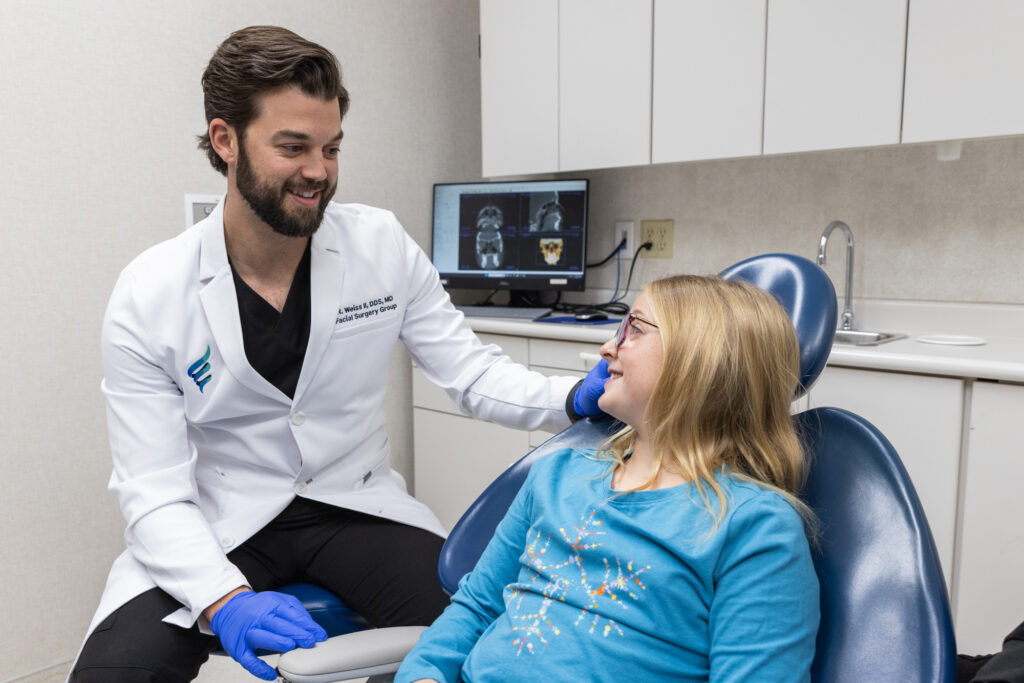
Written by Ingrid Keizer for Facial Surgery Group
The saying “Fat Rises to the Top” originated among dairy farmers. When raw milk is stored in a container and refrigerated, the richest, fattiest part of the milk rises to the top. It is skimmed off and then used to create products that are often priced at a premium. That high milk-fat becomes the ingredient for, rich sauces, delicious desserts, high-end frozen dairy confections and of course butter. Strong economic speculation would suggest that it’s also the dental professionals that provide a premium dental experience that will rise to the top. These are concierge practices that cater meticulously to patient needs, use state of the art technology and pursue new information and skills through continuing education.
2007 marked the beginning of a global financial crises. It also marked a change in how Americans began to allocate their household discretionary spending. Though the purchase of luxury goods barely slowed during the recession, household dental spending in the US has remained a low priority, even for the insured.
In addition to a challenging economic environment, corporate dentistry introduced a new dynamic in how dentists would compete for patients. Their banners advertise inexpensive dental cleanings and their proximity to a patient’s home, work or even local grocer make them hard to resist. Corporate Dentistry serves a purpose in most communities. Talented young dentists are almost certain to find jobs that will help to pay off student loan debt, they are given some time to hone their skills and the convenience and cost does serve some patients.
The culture of dentistry has changed as younger dentist emerge. Millennial values and those of more established dentists have intersected and that’s not at all bad. While more well-established dentists are more likely to allow schedules to “run over” and allow growing production goals to set the pace, millennial dentists are more focused on the work-life balance. A healthy amount of time for recreation, dual income families and the division of parental duties has created a new dynamic in the picture of success for millennials. Meanwhile, the classic dynamic for more traditional dentists has created a great deal of stability, well rewarded staff and healthy retirement accounts. As the future of dentistry continues to evolve, each could offer the other a great deal.
One might guess that there were highly prophetic economists whose knowledge of the volume of sub-prime loans, saw a financial crisis looming back in 2006. Most of us, however, didn’t see it coming. In order to be prepared for the unknowns, we can pay more attention to obvious trends and consider how to use them as tools.
These are seven details that might help Dental Professionals prepare for what is to come:
- According to the CDC, nearly one in four adults between the ages of 20 and 64 have untreated dental caries. The Kaiser Family Foundation, a not for profit that focuses on US health policy, has found that only 49% of Americans with dental coverage had a dental visit in 2013. The belief that dental care is optional is promoted by the perception that dental care is also unaffordable.
- More Americans are “putting off” treatment. It has manifested in increasing numbers of dental emergencies seen in the ER.
- Patients are using the internet more frequently to choose providers. The information that leads them to their decision making is sometimes based on mere perception.
- Dental insurance plans are becoming more selective about covered services and yearly maximums are shrinking. Therefore, patients are paying more out of pocket.
- Millennials are more focused on parenting, health consciousness and more concerned about the foods they consume. Those facts combined with advancements to preventative dentistry will result in a lesser need for major restorative dentistry. Children born after 2000 will require even less restorative dentistry than their parents.
- As Baby Boomers and Generation X’ers grow older, their need for restorative dentistry will increase. Statistics show that only 50% of Baby Boomers have significant savings or retirement investments. Gen Exers have saved and invested even less.
- International Business Consultants Bains & Co. have long speculated that Luxury Goods are recession proof. The concept proved to be true during the Global Financial Crises that began in 2007. While most industry saw profits sink or stagnate, luxury items continued to see growth.
As dentistry continues to evolve and define its future, it can’t ignore the economic currents that carve out the landscape. Adapting to those vulnerabilities successfully, requires the need to differentiate. If the population of patients who can afford out of pocket payment for dental services defines the future of dentistry, then it will indeed be the “phat” that rises to the top.
*Phat- Slang for excellent. Example: Did you see that dude’s G-Wagon? It was so Phat! Translation: Did you see that gentleman’s Mercedes Benz G-Series? It was a fine automobile. The once slang word “Phat” has evolved into a common English word. It is frequently used in online word games and is featured in the online version of the Merriam -Webster’s Dictionary. Everything evolves and changes.
